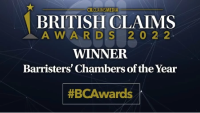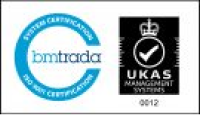Interim Relief: How Employers Can Reclaim the Narrative

Robert Allen, employment and commercial barrister, considers the mechanism of interim relief, why dismissed employees should proceed with caution, and how employers can turn an application against them into a strategic asset.
Interim relief (IR) gives the tribunal the power to compel the employer to reinstate, re-engage or continue to pay a dismissed employee pending the outcome of a final hearing. Given the current pressures within the tribunal system and growing backlog, this interlocutory remedy has the potential to become increasingly valuable to claimants.
The statutory test
IR is only available to employees in limited circumstances. The right to apply is provided for by section 128 Employment Rights Act (ERA) 1996:
‘An employee who presents a complaint to an employment tribunal that he has been unfairly dismissed and –
That the reason (or if more than one the principal reason) for the dismissal is one of those specified in –
Section 100(1)(a) and (b), 101A(1)(d), 102(1), 103 or 103A or
Paragraph 161(2) of Schedule A1 to the Trade Union and Labour Relations (Consolidation) Act 1992,…
May apply to the tribunal for interim relief.’
For an employer, having (rightly or wrongly) decided to dismiss an employee, being required to maintain the terms of a contract for however long it takes for litigation to run its course[1] is, on any measure, draconian. Consequently, the IR bar is set purposefully high. That is not altogether obvious, however. On the face of the wording of the statute, one may be deceived. Section 129 ERA 1996 provides:
‘This section applies where, on hearing an employee’s application for interim relief, it appears to the tribunal that it is likely that on determining the complaint to which the application relates the tribunal will find the reason (or if more than one the principal reason) for the dismissal to be one of those specified…’
(Emphasis added)
My ‘likely’ is not necessarily as likely as yours. The statute offers little by way of assistance.
Guidance from caselaw
Caselaw has – to a degree – clarified matters. The word ‘likely’ is to be construed as meaning the employee has a ‘pretty good chance’ of success at the final hearing.[2] But what does a ‘pretty good chance’ mean? According to Mr Justice Underhill, a ‘pretty good chance’ ostensibly means ‘a significantly higher degree of likelihood than just more likely than not.’[3] The then President went on to state: ‘in this context ‘likely’ does not mean simply ‘more likely than not’ – that is at least 51% – but connotes a significantly higher degree of likelihood.’ In short, it’s no easy task to prove.
Application
By illustration, take one of the more common routes to IR: an automatic unfair dismissal by operation of section 103A ERA 1996. In such a case, IR can only be ordered where the tribunal is satisfied that it is likely on hearing the evidence at a final hearing that the reason (or principal reason) for the dismissal was that the employee made a protected disclosure. It falls to the applicant to establish the necessary level of likelihood in relation to each and every distinct element of the claim.[4]
So, to succeed, the applicant must establish that it is likely that the tribunal at a final hearing would find that:
- they made a disclosure;
- they believed that the disclosure tended to show one or more of the matters listed in section 43B(1) ERA 1996;
- that belief was reasonable;
- the disclosure was made in the public interest;
- the disclosure was the sole or principal cause of dismissal;
As for that final limb, in the absence of qualifying service on the part of the employee, it falls to them to prove the causative link to dismissal.[5] Only employees with two or more years of continuous service shift the burden to their employer to show they were not dismissed with the sole or principal reason being the disclosure.
Procedure
Pre-hearing
IR applications are exempt from the usual requirement[6] to conciliate before passing go. Time limits are tight: claimants must apply within seven days of the date of dismissal and there is no latitude for an extension.[7] A hearing will be listed promptly thereafter. The issue shall be determined ‘as soon as is practicable’.[8] Employers will have at least seven days’ notice of a hearing, but seldom more.[9]
Though an IR hearing will be a matter of days away by the time an employer is put on notice, parties should nonetheless attempt to cooperate to agree bundle contents. The bundle should be restricted to what is necessary; less is more. A bundle running to hundreds of pages is rarely indicative of a successful IR application. Parties can, and should, make appropriate use of witness statements. And the value of a concise skeleton argument drawing it all together cannot be underestimated.
At the hearing
Even when statements have been provided, expect the judge to hear submissions alone. Rule 94[10] provides that the tribunal ‘must not hear oral evidence unless it directs otherwise’. Any request to hear oral evidence would have to be founded on an exceptional reason. If you are seeking the tribunal to hear evidence, be ready to justify why this irregular step is necessary in the circumstances. Is there a point that can only be made orally? If so, why has it not been set out in a witness statement? If there is a point of challenge, why is it just to challenge it now? If you are resisting such a request made by the other side, emphasise that the task at an IR hearing is to take each party’s case at its evidential height. Moreover, point to the overriding objective[11] in light of the risk that hearing evidence at an interlocutory stage may well prejudice evidence at a final hearing.
Tactical considerations
Applying – eager enthusiasm may prove ephemeral
No claimant presents an ET1 without some initial level of confidence in the outcome. But when pursuing IR, such early confidence must be particularly well-placed. IR, for all it can subject the respondent to early pressure (and cost), has the potential to backfire.
First, there is no disclosure process. Not only do employees have to prove each element of the legal test to the required standard; they must do so based upon the documentation they have available to them at the time of applying. Whereas many cases can evolve based upon disclosure identifying key evidential vulnerabilities, IR will turn simply upon what the employee is able to point to from their own records, combined with anything the employer elects to cite for themselves (and the latter is unlikely to be helpful). Even taking the very first stage of a section 103A ERA 1996 dismissal – the employee will need to be ready to point to clear evidence of the precise circumstances of the disclosure they purport to have made. This can be far from straightforward, even with disclosure.
Second, whilst it may be tempting to put early pressure on the employer by making them face an IR application, it must be borne in mind that if IR is successfully resisted, it could be followed swiftly by an application on the employer’s part for costs.
Responding – turning an obstacle into an asset
Whilst facing an application for interim relief can seem daunting, requiring prompt tribunal attendance and early incurrence of costs, it can also present an opportunity for the respondent to make early headway in turning the momentum of the litigation in their favour.
The key to defeating IR applications is to properly apply the test. Limb by limb, submissions can be raised to demonstrate why the applicant does not come up to proof. The bar is high, and each limb presents its own evidential obstacles. In approaching this exercise, the respondent has the tactical benefit of using contemporaneous documents which favour their position, without having to disclose that which could be more damaging.
Where an IR application is successfully opposed, various opportunities present themselves. Principally, the employer has shifted the momentum in their favour. The IR hearing provides an initial forum for submissions explaining why the claim is not as strong as was believed by the other side. If a judge agrees with those submissions, confidence in the prospects of the claim is inevitably diminished – providing scope for settlement or withdrawal.
Having seen off IR, an employer can, in certain cases, use the hearing to go further. For one, the decision to pursue IR at all may have been unreasonable in the circumstances, such that the door is open to pursue costs. If, for instance, an employer is able to justify why the application fails to come up to proof by some margin on each and every aspect, the tribunal may be minded to make a costs order – particularly so if it is persuaded the tribunal’s time has been wasted in the process. Equally, provided IR was sought within a claim that had been presented following conciliation[12], there would be nothing stopping the respondent from applying for a deposit order at the hearing if the evidence tended to suggest its prospects were sufficiently low.
Summary
Dismissed employees should proceed with care when weighing up the benefits and risks of IR. After all, a prepared employer could utilise an application against them for their own benefit, demonstrating unforeseen weaknesses in the claim and pursuing costs for the tactical misstep. ‘As the ancient Romans said, festina lente.’[13]
Robert was recently instructed to respond to an interim relief application. Having successfully resisted it; he went on to obtain a costs order in favour of his client. If you wish to instruct a member of our employment team to help navigate an interim relief application, please contact our clerking team.
[1] A period which is increasingly measured in years rather than months
[2] Taplin v. C Shippam [1978] IRLR 450 EAT
[3] Ministry of Justice v. Sarfraz [2011] IRLR 562 EAT
[4] Hancock v. Ter-Berg [2020] ICR 570
[5] Smith v. Hayle Town Council [1978] ICR 996, CA
[6] Under s.18A Employment Tribunals Act 1996
[7] See s.128 (2) ERA 1996 and s.161 (2) Trade Union and Labour Relations (Consolidation) Act (TULR(C)A) 1992
[8] S.128 (3) ERA 1996 and s.162 (1) TULR(C)A 1992
[9] S.128 (4) and s.162 (2) ibid
[10] Employment Tribunal Procedure Rules 2024, SI 2024/1155
[11] Now found at Rule 3, ibid
[12] This would be rare, given the narrow time limits and IR’s exemption from the early conciliation requirement
[13] In the words of Iolanthe’s Lord Chancellor.













